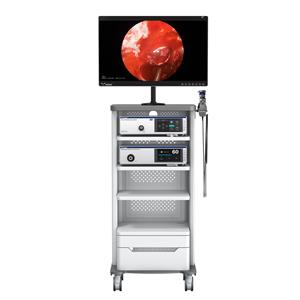Colposcopy result judgment
Colposcopy result judgment
1. The squamous epithelium of normal cervix and vagina is smooth and pink. The epithelium did not discolor after applying 3% acetic acid. Iodine test was positive.
2. Columnar epithelium of the cervix and vagina The columnar epithelium in the cervical canal moves down and replaces the squamous epithelium of the cervix, which is clinically called cervical erosion. To the naked eye, the surface is fluffy and red in color. After applying 3% acetic acid, it swells rapidly and becomes grape-like. Iodine test was negative.
3. The transformation zone is the area where the squamous epithelium and the columnar epithelium are interlaced, including the new squamous epithelium and the columnar epithelium that has not been replaced by the squamous epithelium. Colposcopy shows dendritic capillaries; an island of grapes formed by metaplastic epithelium surrounded by columnar epithelium; gland openings in the metaplastic epithelium; and retention cysts (cervical gland cysts) covered by the metaplastic epithelium. After applying 3% acetic acid, the metaplastic epithelium was significantly contrasted with the columnar epithelium in the circle. After iodine is applied, iodine is colored in different shades. Pathological examination showed squamous metaplasia.
4. Abnormal colposcopy images All negative iodine tests, including:
(1) White epithelium: white after acetic acid application, with clear borders and no blood vessels. Pathological examination may be metaplastic epithelium, atypical hyperplasia.
(2) Leukoplakia: White patches with rough and raised surfaces without blood vessels. It is also visible without 3% acetic acid. Pathological findings are hyperkeratosis or parakeratosis, and sometimes HPV infection. There may be malignant lesions in or around the leukoplakia, and biopsy should be routinely taken.
(3) Punctate structure: formerly known as leukoplakia base. After applying 3% acetic acid, it turns white, with clear boundary, smooth surface and very fine red dots (punctate capillaries). Pathological examination may have atypical hyperplasia.
(4) Mosaic: Irregular blood vessels divide the hyperplastic white epithelium after coating with 3% acetic acid into small blocks with clear boundaries and irregular shapes, like a pattern of red thin lines mosaic. If the surface is irregularly prominent and the blood vessels are pushed around, it indicates that the cells proliferate too quickly, and attention should be paid to cancer. Pathological examination is often atypical hyperplasia.
(5) Irregular blood vessels: Refers to blood vessels with extremely irregular diameter, size, shape, branch, direction and arrangement, such as spiral, comma, hairpin, leaf, line spherical, bayberry, etc. Pathological examinations are mostly cancer of varying degrees.
5. Early cervical cancer The surface structure is unclear under strong light irradiation, and it is cloudy, brain gyrus, lard-like, and the surface is high or slightly concave. Local blood vessels are abnormally proliferated, the lumen is enlarged, the normal blood vessel branching is lost, the distance between each other is widened, and the direction is disordered. After applying 3% acetic acid, the surface was hyaline edema or cooked meat, often with atypical epithelium. The iodine test is negative or very pale.
- NEWS
- BLOG
- Industry News
- Company News




